
Cistercian Monasteries in Cashel and Emly
The Cistercian Monasteries in the Archdiocese of Cashel and Emly were Holycross, Kilcooly, Abington and Hore. Remnants of all but Abington exist, Holycross Abbey being in use as the parish church.
| Holycross Chronology Architecture |
Kilcooly Chronology Architecture |
Hore Chronology Architecture |
Abington Chronology Architecture |
Other Sites of Cistercian Interest |
|||
| Manister Abbey Magium - Motherhouse of Holycross |
|||
¦ History Index ¦
¦ Main Page ¦
There are no Cistercian houses in the Archdiocese at present, Mount Saint Joseph Abbey in County Offaly and Mount Melleray in County Waterford are the closest current houses. There were strong connections between the Archdiocese and the Order in the past - four successive Archbishops of Cashel between 1182 and 1237 were Cistercians. Archbishop Donnchadh Ó Lonnargáin took ill while on a journey to Rome and became a Cistercian monk at Citeaux before returning home. Pope Honorius III indicated the suitability of the two offices in a letter to the people of Cashel (3 August 1220), stating that the Archbishop had now "the habit of a monk and the dignity of a pontiff." David MacCearbhaill, having been Archbishop for fifteen years, became a Cistercian in 1269, and continued his administration of the diocese for a further twenty years.
The following table lists the Cistercian Foundations in the Archdiocese, giving their Latin names, dates of foundation, mother house and the modern parish.
¦ History Index ¦
¦ Main Page ¦
The political instability of the fourteenth century impacted on the monasteries. Poor harvests and plague took their toll and little building was undertaken. A resurgence of building followed, adding to or replacing the original structures.
Areas of the archdiocese which were under the control of the Earl of Ormond enjoyed security and prosperity during the fifteenth century. Holycross, Kilcooly and Hore monasteries thus benefitted. James, the fourth Earl of Ormond (1405-1452) was a powerful figure of his day. As well as being lord-lieutenant and justiciar, he travelled widely, taking part in Henry V's French wars. His patronage of Holycross enhanced its status considerably. This Abbey was distinguished among Irish Cistercian houses in that it was a place of pilgrimage, having a Relic of the True Cross.
Holy Cross Abbey
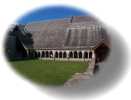
There were monks in Uachtar-Lamhan (the ancient Celtic name for Holy Cross) before the Cistercians came from Monasteranenagh, (Croom) County Limerick.
Chronology
In 1621, Luke Archer, Abbot of Holy Cross, was acknowledged as having the right to appoint to priests to parish of Holy Cross. This right appears to have persisted until 1704 with appointments being made by the Archbishop from 1752. Archer appointed the Cistercian John O'Dea as Parish Priest of Holy Cross about 1623. O'Dea, formerly a secular priest, later became Abbot of Corcomroe (Burren) about 1628.
Architecture
The carving of the local blue-grey limestone retains much of its original detail. The sedilia is of particular interest and the shrine (reliquary) provides a unique feature to the interior stone-work. The great variety of carved windows may be ascribed to the lack of coordination and to the erratic progress of the building projects.
Kilcooly Abbey
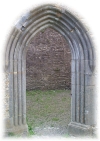
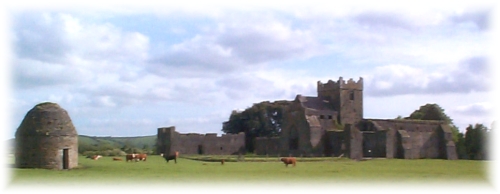
¦ History Index ¦
¦ Main Page ¦
Chronology
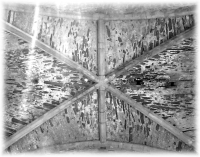
Architecture
Many connections can be made between Kilcooly and Holycross. Some of the local masons employed in its reconstruction in the 1500s had also worked on Holycross during the fifteenth- and sixteenth-century revival of Cistercian architecture.
The photograph above shows the only ssurviving medieval dove-cote standing near the Abbey. The detached infirmary building can also bee seen near the cloister.
Some of the carvings on the sarcophagi are from the Rory O'Tunney workshops.
¦ History Index ¦
¦ Main Page ¦
Hore Abbey

Chronology
Monks continues to serve the local parish

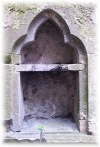 |
Architecture
Hore Abbey is distinctive among Irish Cistercian monasteries in that the cloister lies to the north. The siting of the Abbey, with the Rock of Cashel close by to the north, may explain this departure from the usual arrangement.
Abington
¦ History Index ¦
¦ Main Page ¦
Known variously as Mainistir Uaithne, Abbey Owney, Woney and Owney. This monastery was on the banks of the Mulcair River. One of the major Anglo-Norman houses of its time, nothing remains.
Chronology
¦ History Index ¦
¦ Main Page ¦
Architecture
Thomas Dinley's illustration of 1681 shows the 'Early English' architecture of the Abbey. Nothing remains of the buildings.
|